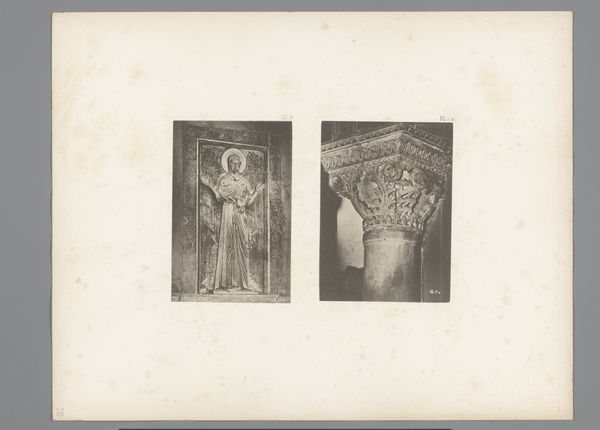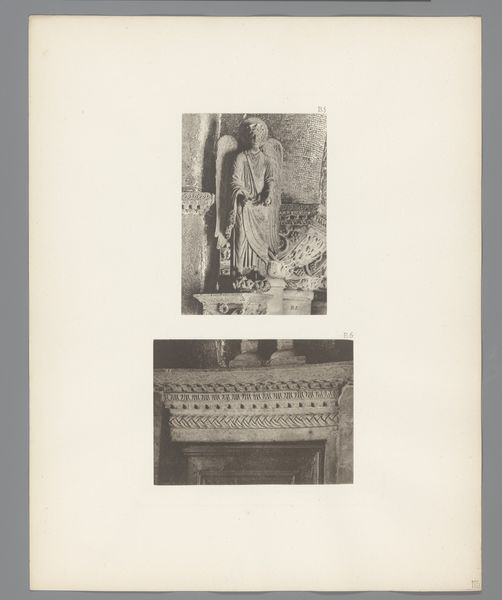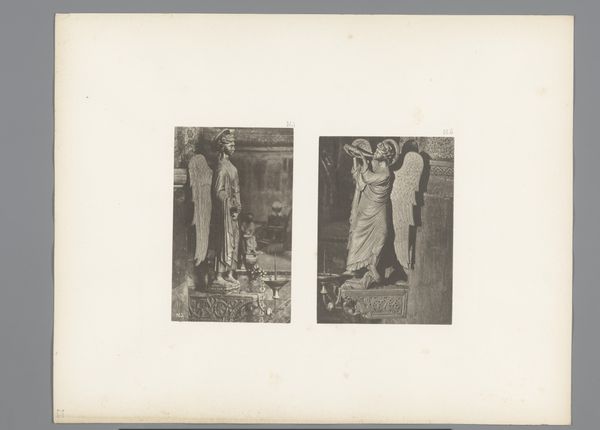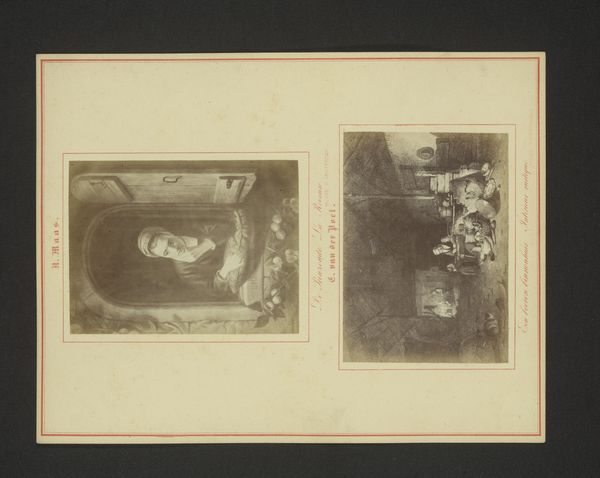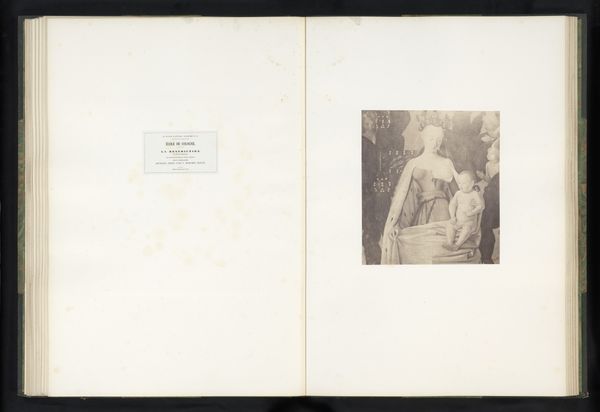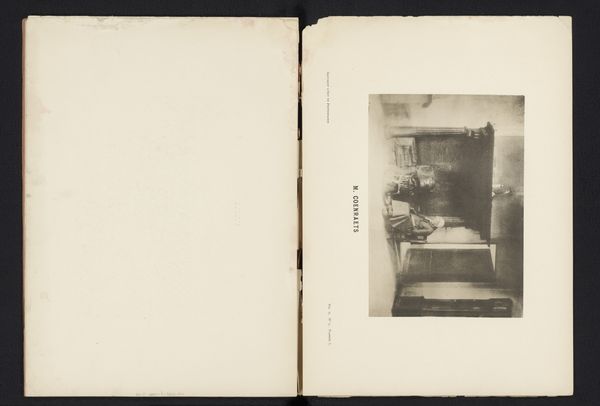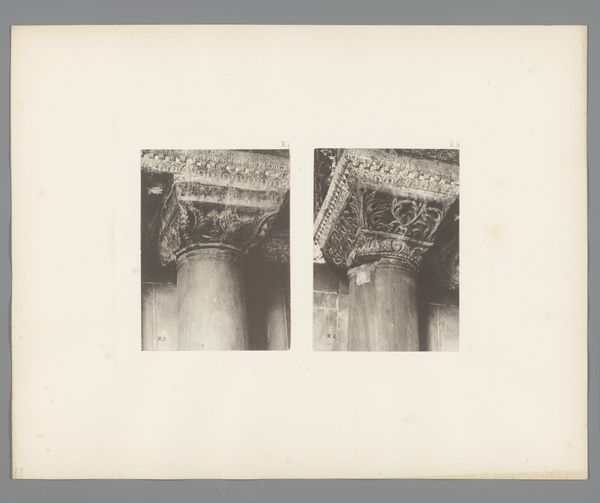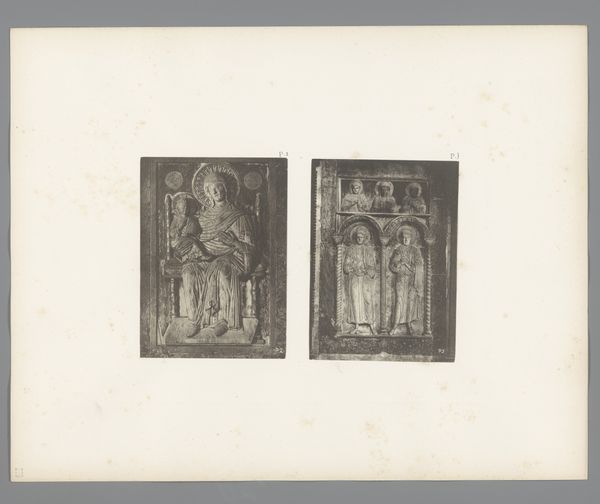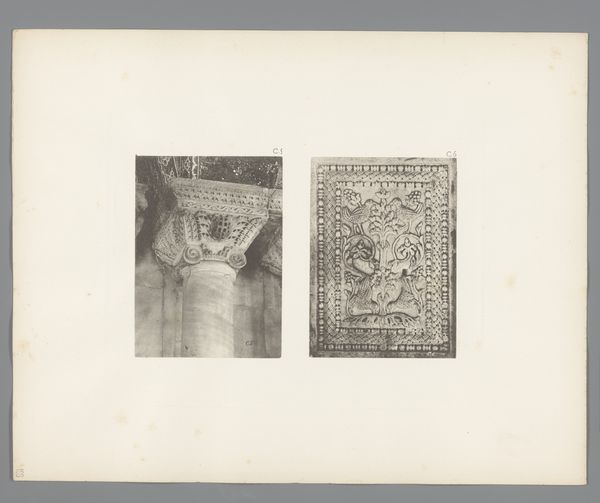
Reliëf van een heilige en een kapiteel van de San Marco in Venetië before 1885
0:00
0:00
print, relief, photography, gelatin-silver-print
#
white colour balance
#
faded colour hue
#
photo of handprinted image
#
homemade paper
#
pale palette
#
pale colours
# print
#
light coloured
#
relief
#
white palette
#
photography
#
ancient-mediterranean
#
folded paper
#
gelatin-silver-print
#
pale shade
Dimensions: height 312 mm, width 394 mm
Copyright: Rijks Museum: Open Domain
Editor: Here we have Carl Heinrich Jacobi's gelatin silver print, "Relief of a Saint and a Capital of the San Marco in Venice," dating from before 1885. It's a study of contrasts – the smooth saintly figure against the ornate, almost lace-like capital. I find it a little sterile though, lacking a certain human touch. What's your take on this? Curator: It's a fascinating juxtaposition, isn't it? Jacobi, in his work, is doing more than just documenting architecture. Consider the political and social implications of photographing these symbols of power—the Church and Venetian authority—during a time of shifting European empires and rising nationalism. Does capturing these specific artifacts challenge or reinforce prevailing power structures of his time? Editor: I see what you mean. It's not just about the pretty picture; it’s about what it represents. But how do you personally react to it as a contemporary viewer, detached from the 19th century? Curator: Well, the faded quality of the gelatin silver print adds another layer. It mirrors the fading power of the institutions themselves. The "white colour balance" and "pale palette" as the tags suggest almost act as a metaphor for their perceived loss of influence, their ideals perhaps becoming diluted in the face of modernity. Editor: So, you're seeing this image not just as a record, but as a quiet critique of institutional authority? Curator: Precisely. It provokes questions about who gets to define "sacred" and what happens when those definitions begin to crumble. Jacobi offers us an almost archaeological perspective on the present. Does this reframe your understanding of his artistic intention? Editor: Definitely. It makes me consider how we're still grappling with similar power dynamics today, even if the players have changed. It's amazing how one image can open up so much for debate. Curator: Indeed! It is a reminder that art serves as a mirror reflecting not only our present, but also the echoes of our past struggles and evolving ideologies.
Comments
No comments
Be the first to comment and join the conversation on the ultimate creative platform.
